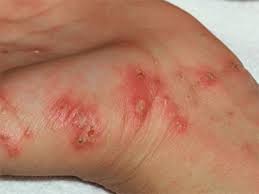Medical team in Chitwan to study status of scrub typhus
 Narayan Dhungana (Chitwan) / Aug 26: A medical team has arrived here to study about the status of scrub typhus, a new disease in Nepal, which is transmitted to humans by mites.
Narayan Dhungana (Chitwan) / Aug 26: A medical team has arrived here to study about the status of scrub typhus, a new disease in Nepal, which is transmitted to humans by mites.
A team from the Epidemiology and Infectious Disease Control Division is here to conduct research on rats to find out the status of disease. Rat mites are major carrier of the bacteria (orientia tsutsugamushi formerly known as Rickettsia tsutsugamushi) that causes the scrub typhus.
The health team that comprises health technicians; and experts Resham Lal Lamichhane, Lalan Saha and Laxman Maharjan is expected to begin study within a week, according to Division Chief Dr Gunanidhi Sharma. Nepal formally announced the presence of the disease last year, and this year five people have so far died from it and 176 have got infected.
Pathology tests for the disease which is easily curable with timely diagnosis and treatment are available at Chitwan-based Bharatpur Hospital and Chitwan Medical College. But the disease is certain to turn fatal in the lack of timely diagnosis and treatment, according to Chitwan Medical College physician Dr Sheetal Adhikari. Bharatpur Hospital’s Chief Medical Superintendent Dr Rudra Marasini stressed that the government should supply a sufficient quantity of kits used in the diagnosis of the bacterial disease. Of the people confirmed infected with the disease, 145 underwent medical checkup in Chitwan alone.
The dead are from Chitwan (one), Tanahun (one), Sankhuwasabha (two) and Bhojpur (one). Victims from Sankhuwasabha and Bhojpur were diagnosed with the scrub typhus at BP Koirala Institute of Health Sciences, Dharan.
It may be noted that last year there were 8 deaths from this disease while the number of infected was 101. The disease was first seen on Japanese militants during the World War II and it is also known as’ ‘tsustsugamushi’.
Rat mites are found in bush, field and forests etc.
High fever, headache, muscle pain, a muscular rash, a primary lesion, cough, sweating, rashes around the neck and gastrointestinal are the signs and symptoms of the disease.
Doctors have suggested people who have to frequently visit the farm, outside the home to wear full-sleeve clothes, use mat while sitting on ground , apply ointment and take precautions for the prevention of the disease and visit the nearby health facility in time in the presence of above mentioned signs and symptoms. RSS
